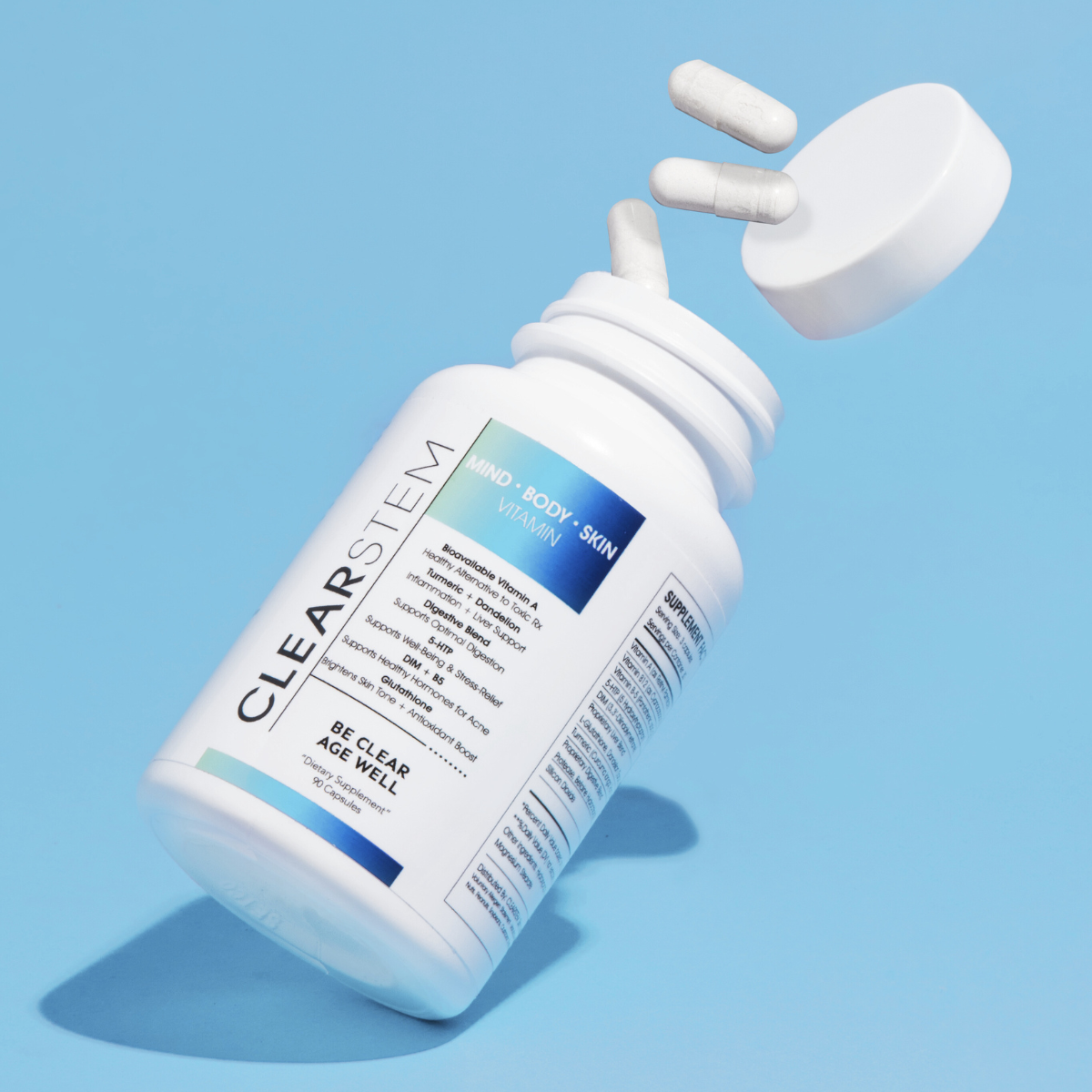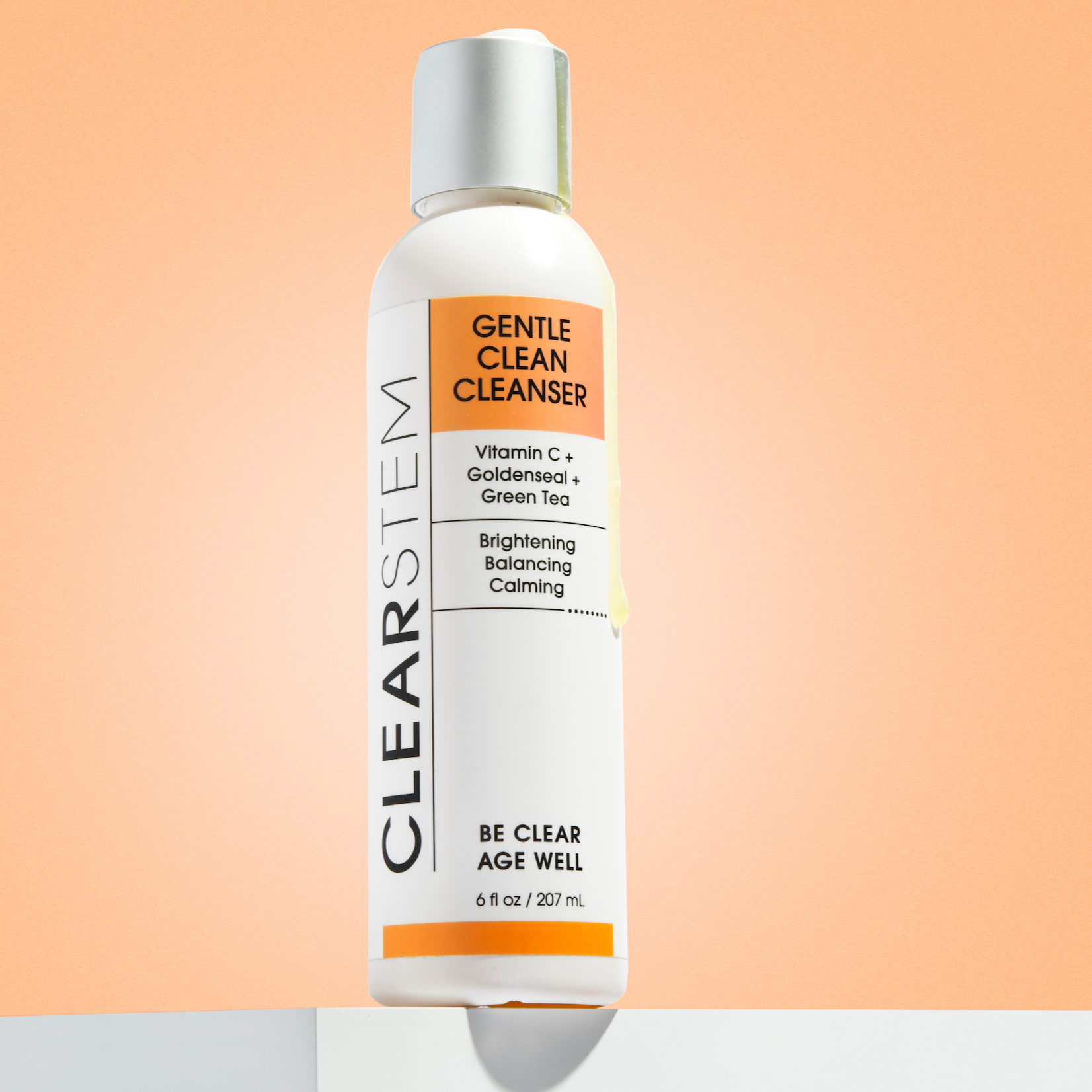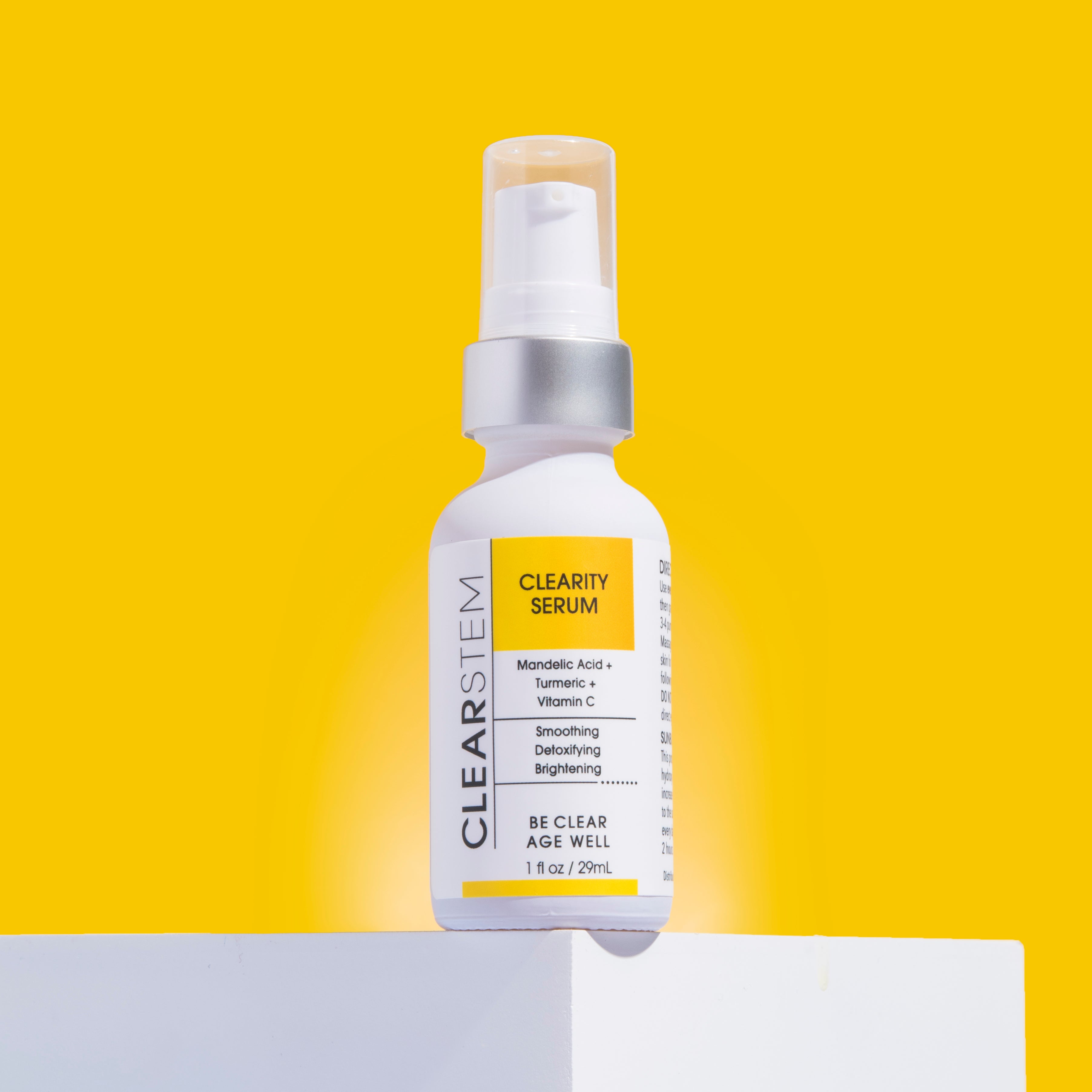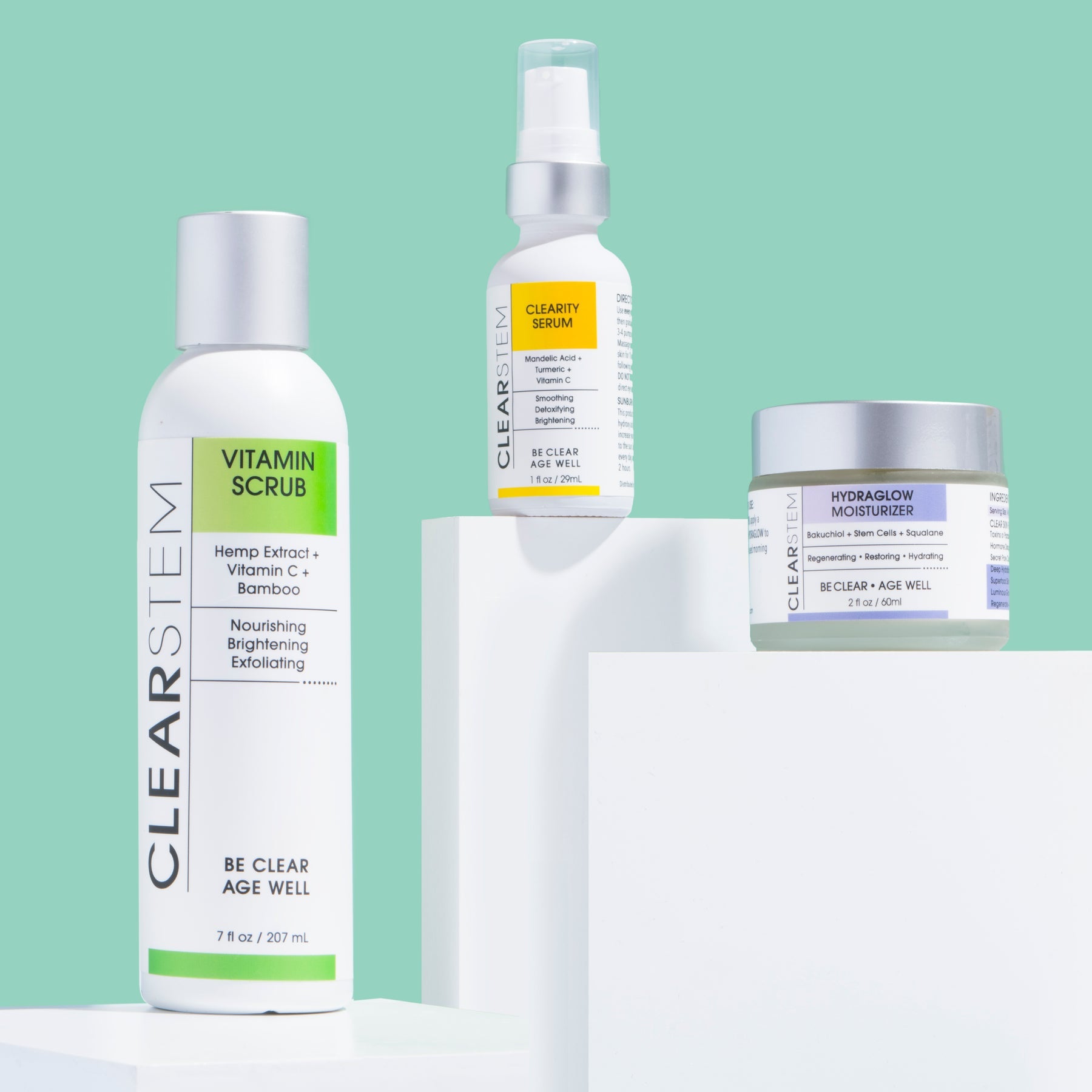When you have acne-prone skin, trying out new skincare products can be more stressful than fun. While others are experimenting with the latest trendy acne treatments making the rounds on TikTok, you’re just trying not to set off your easily irritated skin. But that doesn’t mean you have to settle for the same old products forever.
Instead, take charge of your skin health by learning the ingredients that cause different types of acne, along with those that can soothe and heal it. Dive deeper into understanding the root causes of your acne with tools like the CLEARSTEM Functional Lab Testing. This tailored test can help pinpoint the specific factors in your body, such as hormonal imbalances or potential infections, that may be triggering your breakouts.
Not sure where to start? You’re in the right place. In this article, we’ll reveal 7 common acne-causing culprits and teach you how to spot them before you let them near your skin. We’ll also cover some of the best ingredients in skincare for acne-prone skin you can use to obtain clear skin.
#1 Coconut Oil
It may seem like a natural and healthy choice for your skin, but coconut oil can do more harm than good if you’re acne-prone. Coconut oil is high in many types of saturated and unsaturated fats, including lauric acid, a fatty acid that can kill acne-causing bacteria.
Despite this, the high fat content also makes coconut oil a highly comedogenic ingredient—in other words, it’s a major pore-clogger.
So, before applying coconut oil to your skin for its antibacterial effects, keep in mind:
- It can trap dirt, bacteria, and dead skin cells on your skin, leading to clogged pores, blackheads, and whiteheads
- It can cause inflammation and irritation in some people, especially those with sensitive skin
- It can leave a film on your skin that prevents other skincare products from working effectively
Opt for a lighter option like rosemary oil for your skin that can target acne, aging, uneven skin tone, and enhance sun protection without clogging pores.
#2 Shea Butter
Shea butter is a natural fat that’s extracted from the nuts of the shea tree. It’s been used for centuries both as a moisturizer and as a food ingredient in West Africa where the tree is native.
While shea butter can provide a rich, soothing feel on the skin, it’s also moderately comedogenic, making it a pore-clogging ingredient. For those with oily skin, it’s best to avoid shea butter and opt for a non-comedogenic moisturizer.
#3 Parfum/ Perfumes
You may love the smell of your skincare products—but your skin might have other feelings about these smells. This is because artificial fragrances are a major source of skin irritation and allergies. They can also irritate your pores and increase the likelihood of an acne breakout, falling under the category of “acnegenic”.
Buying products labeled “fragrance free” can help, but there are some sneaky fragrance ingredients that can still slip through. Check the label and avoid products that include these scented additives:
- Linalool
- Limonene or d-Limonene
- Benzaldehyde
- Citronellol
- Citral
- Amyl cinnamal
- Eugenol
#4 Myristates
Myristates are commonly added to moisturizers and serums for their thickening properties. It can be helpful for those with dry skin, however oily or combination skin-havers will experience more breakouts because they’re highly comedogenic. Be mindful of skincare ingredients with:
- Benzyl ether myristate
- Isopropyl myristate
- Myristyl myristate
- Myristyl myristate
- Myristic acid
A thick occlusive layer can trap sebum and bacteria, causing inflamed acne. If you notice tiny bumps on your T-zone, that could be a sign that your moisturizer has myristates, which you should swap immediately.
#5 Thick Silicone Products
Silicones are used in skincare for their smoothing and softening properties. They can also create a protective film that helps lock in moisture, making it suitable for skin and hair care. But silicones have some drawbacks for acne-prone skin, including:
- Can trap dirt, oil, and bacteria – That protective barrier can also trap particles against your skin, leading to clogged pores. To prevent this, you should only apply silicones on freshly washed, clean skin.
- Can conflict with other products – When silicones are applied over other products, they can push those products into the deeper layers of the skin. This can potentially cause irritation and breakouts.
#6 Algae & Seaweed Extracts
Algae extracts are popular in skincare products for their hydrating benefits. However, algae also contain high levels of iodine, a mineral that can irritate the pores when used in excess. They also contain natural oils that are just a bit too thick compared to our natural sebum and can cause a clog.
There are many names for algae extracts in skincare products, including:
- Carrageenan
- Irish sea moss
- Laminaria
- Kelp
- Seaweed
- Chlorella
- Any random latin name ex: “laminaria digitata” needs to be checked in Google or on our pore-clogger list to see if it's a seaweed
#7 Ethylhexyl Palmitate and Isopropyl Palmitate
These common emollients (moisturizers) are often used in makeup to add a rich, smooth feel. However, they are all rated highly comedogenic. This means it’s best to avoid them if you have oily skin.,
How to Check for Pore-Clogging Ingredients
If the thought of trying to remember this list has you overwhelmed, don’t worry. We’ve made it easy to check any product for known pore-clogging ingredients—simply use our pore clogging ingredients checker.
Copy and paste the ingredient list of any product into the checker and hit the “check” button. You’ll get an instant list of exactly which ingredients—if any—are a no-no. No chemistry degree required!
What Can I Use on Acne-Prone Skin?
Feeling like there’s nothing left to put on your sensitive skin? Not the case. Here are some ingredients that are helpful for preventing breakouts, clearing up blemishes, and fading scars:
- Mandelic acid – This alpha-hydroxy-acid (AHA) exfoliates the skin and unclogs the pores gently and effectively. It also reduces signs of aging and hyperpigmentation, including dark spots from acne scars.
- Turmeric – Turmeric is a good source of curcumin, which has anti-inflammatory, antioxidant, and antibacterial properties. Both topical products and hormonal-safe acne supplements containing turmeric can lessen acne by fighting bacteria and reducing inflammation.
- Vitamin C – Vitamin C is a powerful antioxidant that has a wide range of benefits for skin health. It can protect the skin from free radical damage, reduce redness, fade scars, and create a brighter, more even skin tone.
- Non-comedogenic oils – oils with a score of zero (or in small amounts a 1) are safe to use topically! These include hemp oil, rose hips oil, sunflower oil, safflower oil, argan oil, castor oil and generally most essential oils when properly diluted for sensitivity.
Get Your Clearest Skin Yet With CLEARSTEM Skincare
Dealing with acne-prone skin can be challenging, but by knowing which ingredients to avoid and which to include in your daily routine, you can achieve your best skin ever.
For skincare that’s specifically formulated for the unique needs of your acne-prone skin, trust CLEARSTEM Skincare. Whether you’re looking for gentle age-fighting serums or you need to fight an active breakout, we have natural, effective products that are right for you. Discover our best-selling daily capsule designed to clear and prevent acne, without 5-HTP, making it a great option among natural supplements for hormonal acne. That’s because all of our skincare products are free of hormone disruptors, toxins, and ingredients that are harmful to skin health.
Take our simple skincare quiz today to discover your skincare essentials.
Sources:
- American Academy of Dermatology Association. 10 tips for clearing acne in darker skin tones. https://www.aad.org/public/diseases/acne/DIY/skin-color
- Associated Skin Care Professionals. A Beginner’s Guide to Acne Triggers. https://www.ascpskincare.com/updates/blog-posts/beginner-s-guide-acne-triggers
- Biomaterials. The antimicrobial activity of liposomal lauric acids against Propionibacterium acnes. https://pubmed.ncbi.nlm.nih.gov/19665786/
- The Dermatology Review. Silicones: Why are silicones used in skincare? https://thedermreview.com/silicones/
- Environmental Working Group. Fragrance. https://www.ewg.org/skindeep/ingredients/702512-FRAGRANCE/
- Ghana Medical Journal. Coconut oil and palm oil's role in nutrition, health and national development: A review. https://www.ncbi.nlm.nih.gov/pmc/articles/PMC5044790/
- International Journal of Dermatology. A randomized, double-blind, placebo-controlled trial to determine the efficacy and safety of lactoferrin with vitamin E and zinc as an oral therapy for mild to moderate acne vulgaris. https://pubmed.ncbi.nlm.nih.gov/28369875/
- Journal of the American Academy of Dermatology. Comedogenicity of current therapeutic products, cosmetics, and ingredients in the rabbit ear. https://pubmed.ncbi.nlm.nih.gov/6229554/
- Journal of the American Academy of Dermatology. Perfume dermatitis. https://www.jaad.org/article/S0190-9622(85)70001-1/fulltext
- Journal of Cosmetic Dermatology. Sodium L-ascorbyl-2-phosphate 5% lotion for the treatment of acne vulgaris: a randomized, double-blind, controlled trial. https://pubmed.ncbi.nlm.nih.gov/20367669/
- National Academies of Sciences, Engineering, and Medicine. Lost crops of Africa: Volume II: Vegetables. https://nap.nationalacademies.org/read/11763/chapter/19#303
- Phytotherapy Research. Effects of Turmeric (Curcuma longa) on Skin Health: A Systematic Review of the Clinical Evidence. https://onlinelibrary.wiley.com/doi/abs/10.1002/ptr.5640
- Prevention. The truth about “fragrance free” products. https://www.prevention.com/beauty/skin-care/a20454834/the-truth-about-fragrance-free-products/
- Skincare Lab. Ethylhexyl-palmitate in skincare: Is it bad? https://www.skincarelab.org/ethylhexyl-palmitate/












